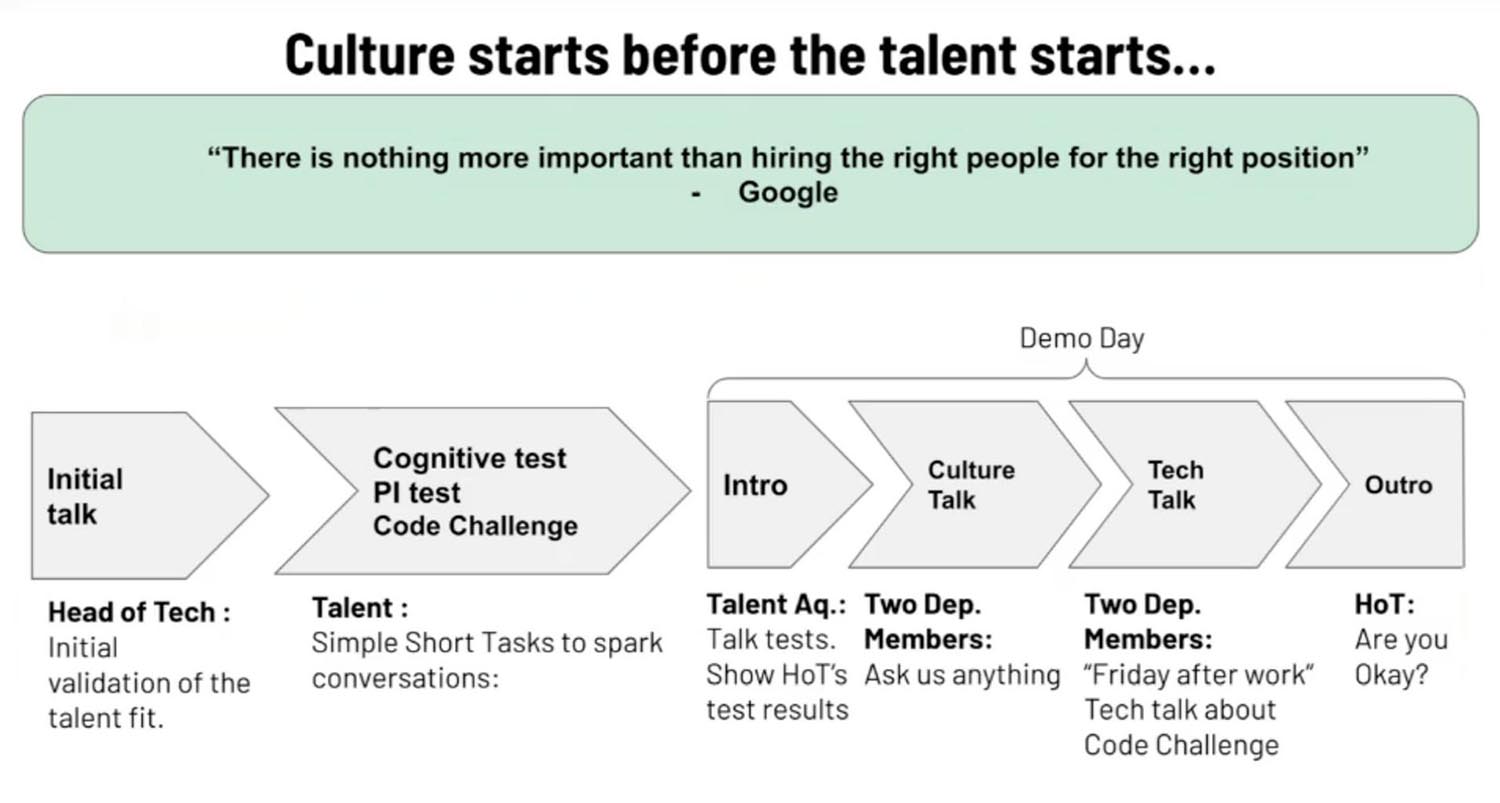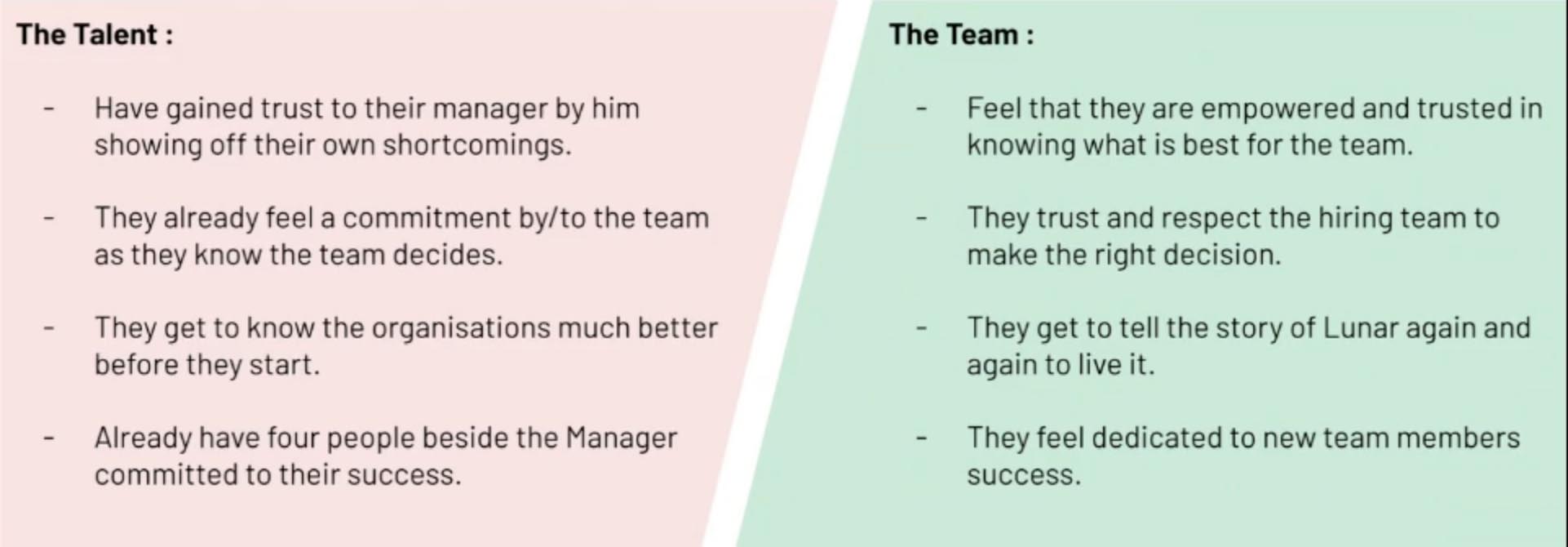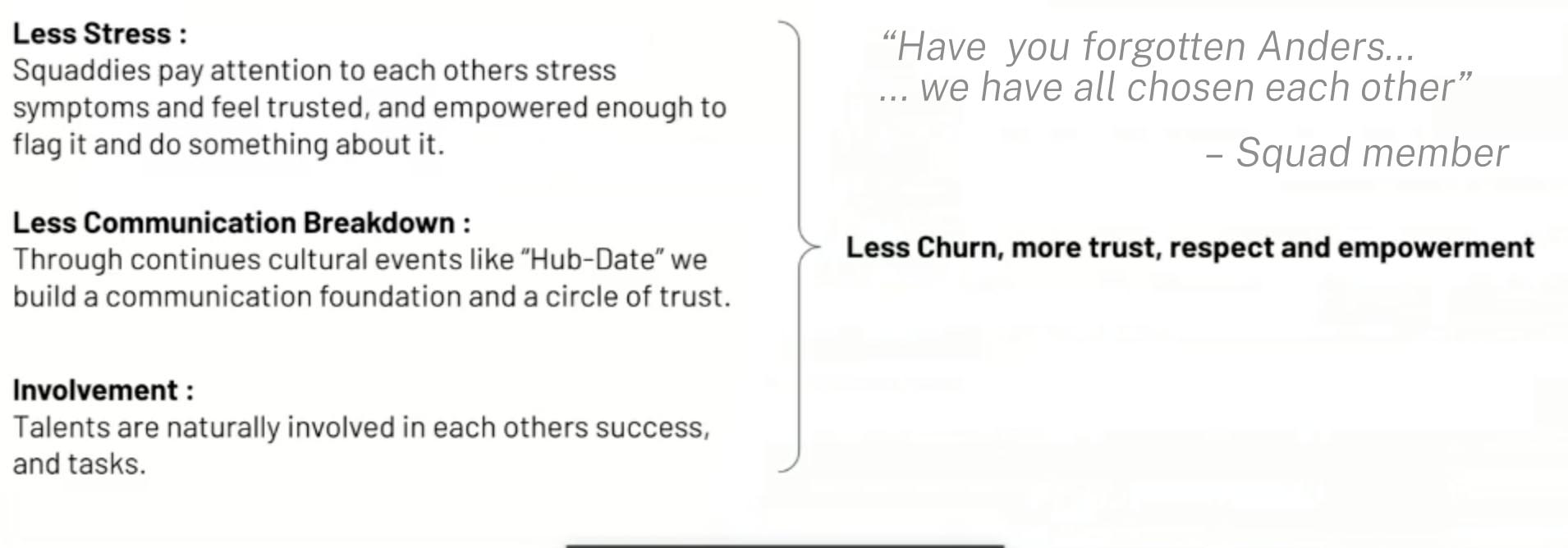Who is Anders Kring
As an engineer with a background in the games industry, Anders Kring has always been drawn to creating innovative code. Throughout his career, he has found himself building teams at various companies, including Cisco, Berlingske Media, Zmags, TV2, and currently, Lunar Bank.
On the Lunar Bank and its growth
Lunar Bank is a financial technology (fintech) company that serves over half a million customers across the Nordics. It has a business bank and approximately 600 employees. Lunar Bank is uniquely structured into “squads,” or cross-functional teams that work together on specific domains, each named after a famous NASA mission and represented by a squad logo.
When Kring joined Lunar Bank in May 2021, it had six squads and no locations in Copenhagen or Stockholm. In the ensuing year and eight months, the company experienced explosive, unorganic hyper growth, expanding to four locations and adding numerous new squads.
This rapid expansion brought both magic and challenges. The intense heat of the hyper growth wildfire could easily burn out employees, leading to breakdowns in communication, disengaged talent, and stress. There was a lack of alignment and a sense of confusion about the mission and strategy.
To address these issues, the Lunar product team implemented a number of changes, including strengthening the company’s culture, increasing transparency and communication, and establishing a clear vision and strategy. These efforts have paid off, resulting in a more cohesive, aligned, and engaged team.
The Importance of Peer Leadership in Times of Hyper Growth
As companies experience hyper growth, they may encounter a range of challenges, including communication breakdowns, disengaged talent, and a lack of alignment and clarity about the mission and strategy. These problems can lead to high levels of employee churn and low productivity.
One potential solution to these issues is the implementation of peer leadership. Peer leadership involves empowering team members to take on leadership roles and responsibilities, rather than relying solely on traditional management structures. This can foster a sense of ownership and accountability, leading to increased engagement and productivity.
The difference between management and leadership
Before implementing peer leadership, it is important to understand the distinction between management and leadership. Management involves the practice of planning, organizing, and controlling, and is often characterized by the execution of power. Leadership, on the other hand, is the ability to inspire and guide others towards a common goal. It involves the creation of a vision and the development of strategies to achieve that vision, as well as the ability to motivate and empower team members.
In the case of Lunar Bank, Kring and his team implemented a peer leadership model in response to the challenges of hyper growth. This involved empowering team members to take on leadership roles, increasing transparency and communication, and establishing a clear vision and strategy. The results were a more cohesive, aligned, and engaged team.
Introducing peer leadership
Peer leadership involves empowering team members to take on leadership roles and responsibilities, rather than relying solely on traditional management structures. This approach can be particularly effective during times of hyper growth, when traditional management structures may be strained or inadequate. However, implementing peer leadership can also be challenging, as it requires a high level of trust and respect between team members.
One of the key differences between management and leadership is the presence or absence of a power hierarchy.
Management involves the execution of power, with a manager exerting control over their subordinates.
Leadership, on the other hand, involves the ability to inspire and guide others towards a common goal, and may involve leading individuals on the same level as the leader. Peer leadership specifically involves leading individuals who are on the same level as the leader, with no power hierarchy in place.
The lack of a power hierarchy can make peer leadership challenging, as it can be difficult to determine when it is appropriate to lead one’s peers, and when to defer to them. It also requires a high level of trust and respect between the leader and the individual being led, as there is often a lack of clear boundaries between the two.
Despite these challenges, peer leadership can be extremely powerful and effective, fostering a culture of mutual respect and collaboration. When team members are able to lead and be led by their peers, they are able to work together more efficiently and productively, leading to increased success.
Hiring for Peer leadership
Anders Kring found himself faced with the daunting task of hiring 50 new employees. Not only was the process time-consuming, but it was also challenging to build a positive culture and organization while constantly conducting job interviews. In search of a solution, Kring turned to the idea of peer leadership and the importance of trust and respect within a team.
Recognizing that the first batch of hires was particularly crucial in establishing the company’s culture. Anders Kring and his team therefore implemented a rule that everyone on the team must be willing to help one another, even if it meant interrupting their own work. This not only fostered a sense of support and collaboration within the team, but it also set the stage for future hires to be welcomed into a welcoming and inclusive environment.
In the job interview process, Kring and his team focused on finding the right fit for both the position and the company culture. This meant taking the time to thoroughly evaluate candidates and ensure that they would be able to thrive in a culture of trust and respect.

To further cultivate a positive culture, regular check-ins and open communication channels were implmented, allowing team members to share their thoughts and ideas without fear of judgement. This approach has proven successful in building a strong and cohesive team that is dedicated to the success of the company.
Trust and respect as the building blocks
We believe that building trust and respect is key to creating a successful team, and they prioritize getting to know candidates on a personal level as a way of establishing this foundation.
One important aspect of the hiring process is the “Demo Day,” a two-hour session where candidates meet with team members and are encouraged to ask questions and get a sense of the company’s culture. This is followed by a conversation with two team members who are not part of the candidate’s specific department, giving the candidate a chance to learn more about the company and its values.
The final step of the process is a technical interview with team members who are experts in the candidate’s field of work. Rather than simply evaluating their skills and knowledge, these interviews are designed to be more like informal conversations between colleagues, giving candidates a chance to showcase their problem-solving abilities and passion for their work.
Through this comprehensive and personal approach to hiring, Kring and his team have been able to build a strong and cohesive team that is dedicated to the success of the company.

By prioritizing open and honest communication and taking the time to get to know candidates on a personal level, they are able to establish a foundation of trust from the very beginning.
This approach has several benefits for both the incoming talent and the existing team.
- Candidates feel a sense of commitment and gratitude towards the team members who have interviewed them, and they have the opportunity to get to know the organization and its diverse team better.
- At the same time, the team feels empowered to make decisions about who they will be working with and is reminded of the company’s values and mission through the shared storytelling and communication that takes place during the interviews.
As a result of this process, team members feel a strong sense of mutual respect and commitment to one another’s success. This, in turn, fosters a culture of peer leadership and allows the team to work together effectively and efficiently.
Building Trust and Respect in a Hyper-Scaling Team
We faced the daunting task of not only hiring a large number of new employees, but also instilling a strong culture of trust and respect within the organization. We recognized the importance of building this foundation from the very beginning, starting with the hiring process.

To foster a sense of trust and respect, we implemented a number of strategies, including:
- Asking team members to participate in the hiring process and make decisions about new hires, rather than relying solely on management.
- Encouraging open and honest communication, including sharing personal strengths and weaknesses, to build a sense of vulnerability and authenticity among team members.
- Creating opportunities for team members to get to know one another and build connections, such as through social events and regular update meetings.
- Encouraging the reporting of concerns or issues within the team, in a positive and supportive manner, through initiatives like “snitching for the win”.
- Addressing the “fear of missing out” (FOMO) that can arise in a rapidly growing organization, by promoting transparency and inclusivity.
By implementing these and other strategies, we were able to create a team culture that was founded on trust, respect, and empowerment. As a result, team members were able to support and lead one another, enabling the organization to scale effectively without losing its core values.
Book Anders Kring for a mentor session or find other passionate Leadership mentors.